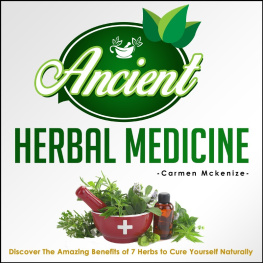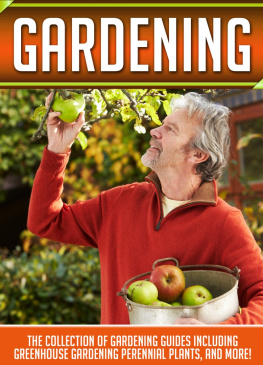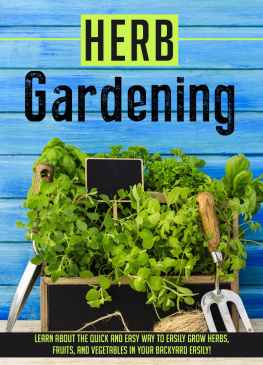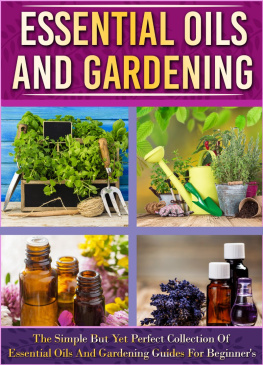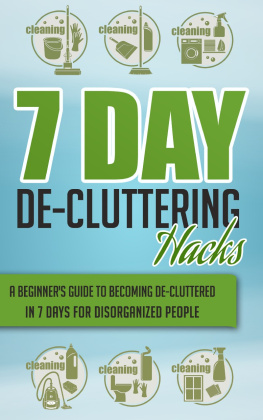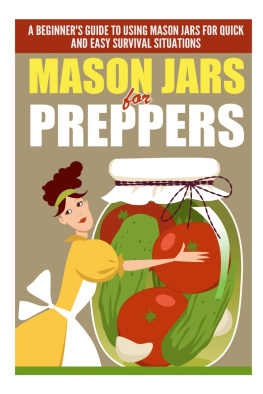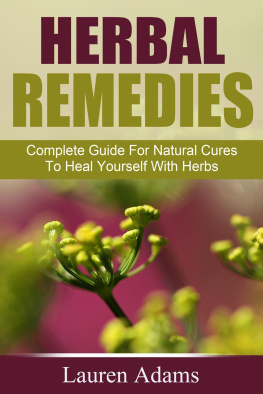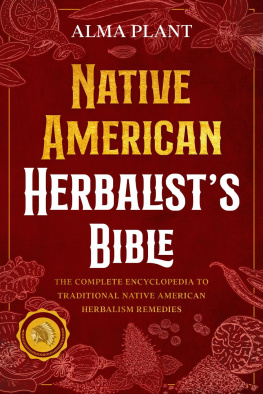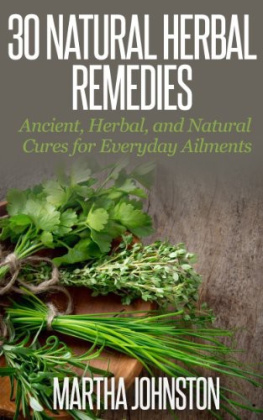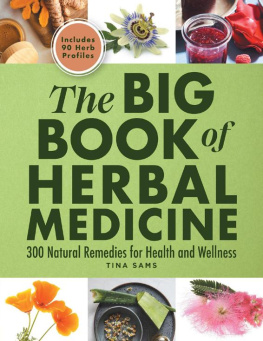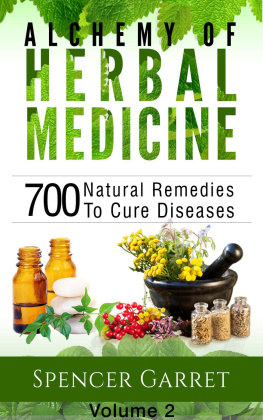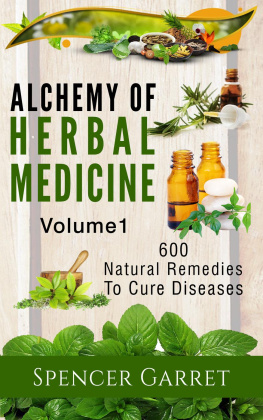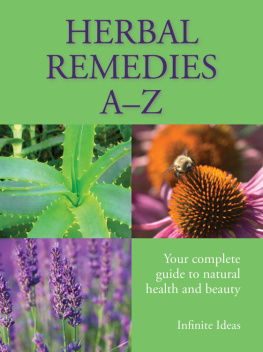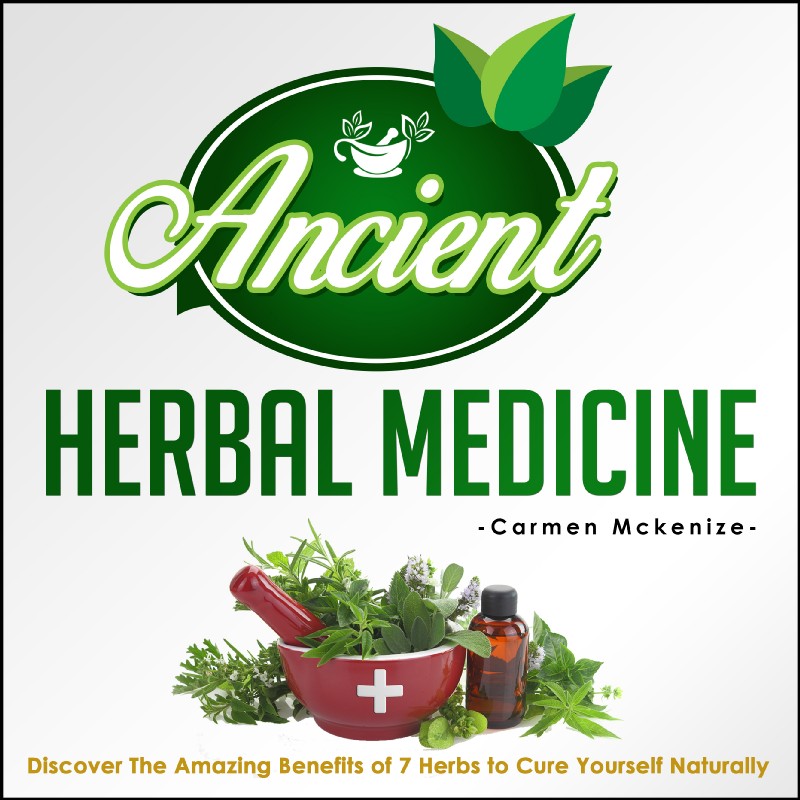Ancient Herbal Medicine
Discover The Amazing Benefits of 7 Herbs to Cure Yourself Naturally
Disclaimer
Although the author and publisher have made every effort to ensure that the information in this book was correct at press time, the author and publisher do not assume and hereby disclaim any liability to any party for any loss, damage, or disruption caused by errors or omissions, whether such errors or omissions result from negligence, accident, or any other cause.
This book is not intended as a substitute for the medical advice of physicians. The reader should regularly consult a physician in matters relating to his/her health and particularly with respect to any symptoms that may require diagnosis or medical attention .
Copyright 2015
This document is geared towards providing exact and reliable information in regards to the topic and issue covered. The publication is sold with the idea that the publisher is not required to render accounting, officially permitted, or otherwise, qualified services. If advice is necessary, legal or professional, a practiced individual in the profession should be ordered.
- From a Declaration of Principles which was accepted and approved equally by a Committee of the American Bar Association and a Committee of Publishers and Associations.
In no way is it legal to reproduce, duplicate, or transmit any part of this document in either electronic means or in printed format. Recording of this publication is strictly prohibited and any storage of this document is not allowed unless with written permission from the publisher. All rights reserved.
The information provided herein is stated to be truthful and consistent, in that any liability, in terms of inattention or otherwise, by any usage or abuse of any policies, processes, or directions contained within is the solitary and utter responsibility of the recipient reader. Under no circumstances will any legal responsibility or blame be held against the publisher for any reparation, damages, or monetary loss due to the information herein, either directly or indirectly.
Respective authors own all copyrights not held by the publisher.
The information herein is offered for informational purposes solely, and is universal as so. The presentation of the information is without contract or any type of guarantee assurance.
The trademarks that are used are without any consent, and the publication of the trademark is without permission or backing by the trademark owner. All trademarks and brands within this book are for clarifying purposes only and are the owned by the owners themselves, not affiliated with this document.
Table Of Contents
Introduction
Each culture in the world brings its own particular traditions and ideas and stories when it comes to the theme of health and wellness. In the past, many people in the United States considered these remedies to be folklore, old wives tales, and overall ineffective remedies. We became reliant on medication for everything and less focused on the effects of the chemicals that we were putting in our bodies. Everything was processed, sterilized and pasteurized and preserved for our safety. The ideas of ancient remedies were ignored and forgotten.
But something incredible is happening now. Maybe it can be attributed to the influx of international information that is now readily available through the internet, maybe it can be attributed to the diversity that the United States is now enjoying due to modern immigration, or maybe it is more of a need to simplify.
We, in the United States, are more and more connected with other cultures around the world. We are learning that not everyone lives like we do, and that there are many other opinions about health and wellness than what we have learned at home or in our culture.
Why I Wrote This Book
My personal experience in searching for simplicity has been driven by my travels outside of the United States. I was born and raised in California and I have always been around organic foods and I was raised with the knowledge that fresh is better than frozen. But I was also surrounded by canned and processed foods, and every time I got sick, there has always been a pill to take or a spoonful of some grape-flavored, syrupy substance for me to swallow.
As I started traveling the world, I became acutely aware of how people live off of what they have. In California we generally have access to anything we need, all the time, but in less consumer-driven places like Africa and South America, the people rely on remedies passed down by relatives. Even in very modern cities like Buenos Aires, Argentina and Sao Paulo, Brazil, there is still more of a connection with alternative medicine compared to in the United States.
Another reason I wrote this book is because I noticed that with my native culture of consumerism, I was spending a lot of money on medication. And every 6 months or so, I would go through my medicine cabinet and throw away the expired medicine. What a waste of money! There has to be a better way!
The herbs that I have chosen to focus on are based on what I have learned traveling, research that I have done. I have also chosen products that are relatively inexpensive and easy to find or plant.
What You Should Know Before Reading This Book
Please keep in mind as you read this book that these are suggested uses for these different kinds of herbs. The book is based on extensive research as well as some anecdotes from users but should not be considered above the recommendations of your doctor.
Chapter 1- Chamomile for Insomnia, Stress, and Anxiety
Chamomile is a plant that has been used across the world throughout history for a variety of different uses. It is a white flowers with a yellow center. It is most frequently served in the form of tea. It has a soft flowery flavor. In addition to use as a tea, it is used in soaps, herbal medications, aromatherapy and essential oils.
. It is also said that they used it to help with problems of the liver, kidney and bladder and with headaches. It also was believed to bring love and fortune to those who used it. They would leave dried pedals around the house to keep away negative energy and plant it next to plants that were not doing well to help bring them back.
There has been research recently that shows that some of the compounds found in chamomile have effects against cancer. They suggest that drinking chamomile tea can inhibit the growth of some cancer cells without negatively affecting normal cells. Chamomile may also help thin the blood, leading to increased circulation. See Chapter 7 for more on the benefits of increased circulation.
Chapter 2- Lavender for Calmness
About Lavender
Lavender is a flower that is part of the mint family. There are many forms of Lavender and it is grown and cultivated for many different uses. Lavender is thought to be from the Mediterranean and it was used by ancient
When the oil of Lavender is applied directly to the skin, it is known to have antiseptic properties, which help prevent infection. It also has anti-inflammatory properties so it can be applied to the skin where there irritation or inflammation. It can be applied to the eyes to reduce puffiness as well.
Honey made from bees that took the pollen from Lavender is also thought to be very effective in reducing chance of infection and swelling in wounds.
Chapter 3-Mint for Digestion
Mint is a plant that can be grown easily in a variety of climates. The leaves can be eaten directly, dried, added to culinary dishes, or made into a tea. The oil is also extracted and used in toothpastes, lotions, candles, foods, and many different products for its scent and flavor, as well as for its healing properties.

